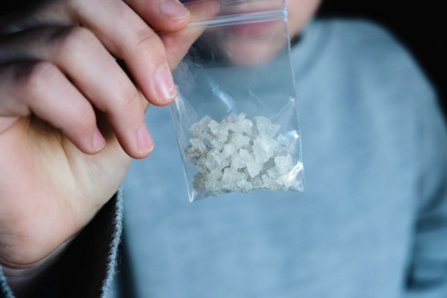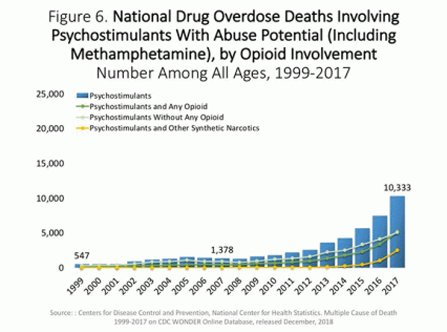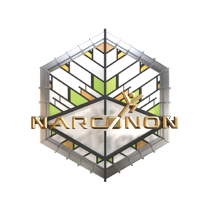What is Meth 2.0?

Every year it seems, there is a new drug on the scene or a new strain of a drug that is even worse than the last one. Case in point, reports are coming in from the Southeast about a new type of methamphetamine that is so potent it’s killing users.
They’re calling it Meth 2.0.
Meth has always been highly addictive. And it can be lethal. But, historically, it isn’t as common for people to die from using it as it is for people to die from using heroin, alcohol, or prescription opiates.
So what’s the story on Meth 2.0?
A New Strain of an Old Drug
Methamphetamine is not a new drug. The chemical formulas for meth have been in use for decades—over a century, in fact. Meth was invented in the late 1800s. The drug made its first major, international appearance in World War II. At that time, both Allied and Axis powers used the drug as a stimulant for fatigued and wounded soldiers.
But just because meth is not new does not mean that the meth people used in decades past is anything like the meth used today. In fact, the meth used today is far more potent and far more dangerous than the meth of yesteryear.
That brings us to Meth 2.0. Quoting an article in USA Today, “Primarily imported from Mexico by major drug traffickers, ’meth 2.0’ is stronger, cheaper, and far more plentiful than the old home-cooked variety. And with historic levels of funding from the federal government focused exclusively on fighting opioid addiction, states and counties are scrambling to find resources to combat this most recent drug plague.”
As that quote suggests, the nation as a whole is still almost wholly focused on the opioid epidemic. And that is somewhat understandable, because the opioid problem has caused severe hardship for millions of Americans. But with all of the attention on the opioid problem, the meth scourge has festered and grown unchecked. Specifically, while the nationwide focus has been on opiates, drug cartels have been able to bring new strains of meth into the U.S.
Again quoting USA Today, “In the first decade of the opioid epidemic, the number of overdose deaths rose fourfold, from 3,400 in 1999 to 13,500 in 2009, based on a Stateline analysis of data from the U.S. Centers for Disease Control and Prevention. With the advent of cheap and powerful imported meth, the spike in deaths has been much sharper. Meth overdose deaths increased fourfold in half as much time, from 2,600 in 2012 to 10,300 in 2017.”
Yet still, even with that increase, meth addiction is not receiving nearly the attention that opiate addiction is. It’s difficult to understand why that might be. According to the statistics, we should absolutely be paying attention to the meth crisis as well.
A Closer Look at the Statistics
The National Institute on Drug Abuse, began publishing information on U.S. methamphetamine addiction rates. Particularly in the last three years, meth addiction and overdose death became so severe that it warranted national attention.
“Approximately 1.6 million people reported using methamphetamine in the past year, and 774,000 reported using it in the past month.”

According to the National Institute on Drug Abuse, “Approximately 1.6 million people reported using methamphetamine in the past year, and 774,000 reported using it in the past month. An estimated 964,000 people aged 12 or older had a methamphetamine use disorder in 2017. … This number is significantly higher than the 684,000 people who reported having methamphetamine use disorder in 2016.”
NIDA also reported on overdose rates for meth misuse, citing at least 10,000 incidences when meth was involved in a drug overdose in 2017. Quoting their research directly, “Nationwide, overdose deaths from the category of drugs that includes methamphetamine increased by 7.5 times between 2007 and 2017. About 15 percent of all drug overdose deaths involved the methamphetamine category in 2017, and 50 percent of those deaths also involved an opioid.”
How Do We Tackle a New(ish) Drug Problem?
Meth addiction is taking hold, particularly now that the drug is even more potent and addictive than it ever used to be. How are we going to overcome the crisis?
- Education. A big part of reducing a drug problem lies simply in getting people educated and informed on the drug. When people know about the true nature of a drug, what it could do to them, what is really at stake, they are much less likely to take that drug. We need to get educational programs in schools and homes. Parents need to talk to their kids about meth. Teachers need to educate young people about meth in classrooms or seminar settings. People need to know the truth about meth. When a student hears about meth for the first time, it should be from a teacher or a parent, not someone who’s trying to sell the drug to them.
- Prevention. Prevention means any effort taken to stop people from using drugs before they ever use them. Education technically falls under the category of prevention. Other preventive efforts include law enforcement programs that crack down on drug dealing and trafficking. Such efforts can also include community marches, fundraisers, events, etc. Anything that raises awareness and tries to stop the problem before it develops.
Rehabilitation. For those who have already fallen prey to meth addiction, they will need the help of residential drug treatment programs to break free from their habits. Meth is one of the most addictive substances in the world. It’s not something that an addict can stop using on his own.
Hearing the news about a new strain of meth is very concerning. More than ever, we have to be vigilant. We have to help our loved ones if they struggle with addiction. And we have to work hard to keep our families and communities safe. The drug problem has become the worst this nation has ever seen. It’s to a point now where this problem is not going to go away unless we all work together.
Sources:
- https://www.history.com/topics/crime/history-of-meth
- https://www.usatoday.com/story/news/health/2019/11/02/meth-use-surges-stronger-cheaper-drugs-imported-mexico/4124765002/
- https://www.drugabuse.gov/publications/research-reports/methamphetamine/what-scope-methamphetamine-misuse-in-united-states
Reviewed by Claire Pinelli, ICAADC, CCS, LADC, RAS, MCAP


